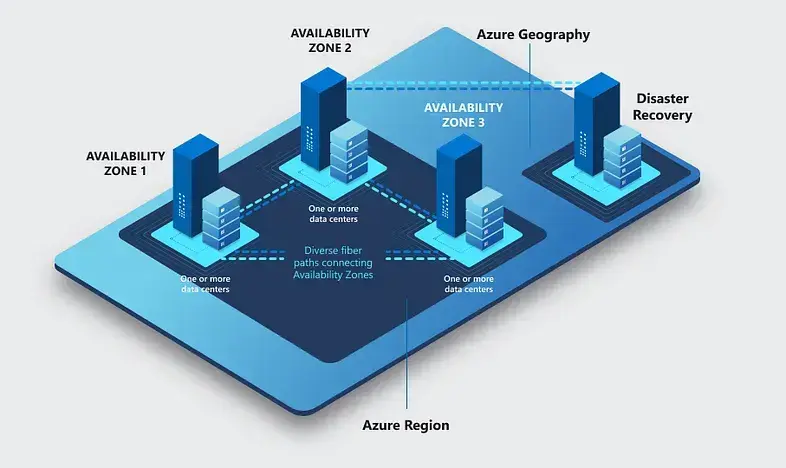🌐 Introduction
Microsoft Azure is one of the top cloud platforms today, offering flexible, scalable services for developers, engineers, and businesses. This blog breaks down the core architectural components that power solutions in Azure — from regions to compute, identity, and monitoring.
☁️ 1. Azure Regions & Availability Zones
Azure divides the globe into regions, which are collections of datacenters. Each region may have multiple availability zones, offering redundancy.
📍 Use Case: Deploying a mission-critical app? Use Availability Zones for high availability.
📦 2. Resource Groups & Azure Resource Manager (ARM)
All Azure resources (VMs, databases, etc.) are organized in resource groups. Azure Resource Manager (ARM) lets you manage them as a unit using templates or code.
🧩 Benefits:
- Easy grouping for billing
- Unified access control
- Infrastructure-as-Code (IaC) support
⚙️ 3. Compute Services
Azure’s compute options include:
- Virtual Machines: Traditional IaaS
- App Services: Managed web apps
- Azure Functions: Serverless compute
- AKS (Azure Kubernetes Service): Container orchestration
🖼️
🗃️ 4. Storage Services
Azure offers various storage types for different use cases:
- Blob Storage: For unstructured data (images, videos)
- Disk Storage: VM disks
- File Storage: SMB protocol-based file shares
- Queue Storage: Message queues for decoupled apps
🖼️ Azure cloud architecture overview diagram
🌐 5. Networking Components
Azure provides enterprise-grade networking:
- Virtual Networks (VNets): Isolated network environments
- Network Security Groups (NSGs): Traffic filtering rules
- Azure Load Balancer & App Gateway: Load distribution
- ExpressRoute: Private on-prem to cloud link
🖼️Azure cloud architecture overview diagram
🔐 6. Identity & Access Management
Azure Identity is key for secure access control:
- Azure Active Directory (AD): User and app identity
- RBAC: Role-Based Access Control
- Managed Identities: App authentication without credentials
🖼️ Azure cloud architecture overview diagram
📈 7. Monitoring & Security
Azure includes robust monitoring and protection tools:
- Azure Monitor: Metrics, logs, and alerts
- Log Analytics: Advanced diagnostics
- Security Center: Threat detection and compliance
🧩 Summary Diagram
🖼️  <!-- Replace with generated diagram link -->
<!-- Replace with generated diagram link -->
🧠 Conclusion
Understanding Azure’s architectural components is crucial for building secure, scalable, and resilient applications. Start exploring with the Azure Free Tier, and let your journey in the cloud begin!
💬 Got questions or thoughts? Drop them in the comments — let’s learn together!






Top comments (0)